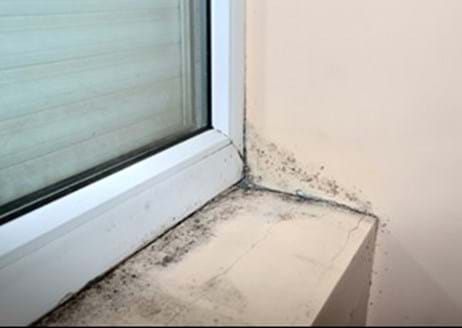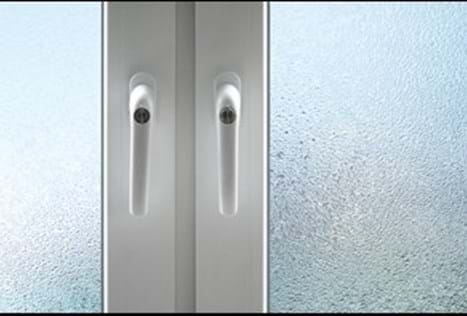Condensation dampness is a condition that affects many homes and properties, and often gets worse in the colder winter months, the so-called ‘condensation season’.
There are steps that can be taken to minimise the impact of condensation and the unsightly, unpleasant and in some cases potentially harmful mould that can result.
There is always some moisture in the air, even if you cannot see it. As air gets colder, it cannot hold all the moisture and tiny drops of water will begin to appear. This is condensation. You can see it when you breathe out when you are outside on a cold day, or when the mirror mists up when you have a bath or shower.
Moisture can often be seen on windows or external walls, north facing walls or cold surfaces within a property. It can also occur in corners, on or near windows, in or behind wardrobes and cupboards.
Initial signs that there is a problem are often when staining and/or mould growth is noticed. The appearance of mould may be black, white, yellow or green in colour depending on the type of mould and the surface it is growing on.
Steps can be taken though to reduce the risk and impact of condensation dampness. Through a combination of better understanding of the causes of the problem, and a review of how the property is lived in, excessive condensation can be greatly reduced.

There is no single magic remedy for eliminating condensation – a balanced combination of actions usually achieves the best results. Improving air flow is important, but this should be in combination with a reduction in the production of water vapour.
Moulds are hydrophilic fungi i.e. they require high levels of surface moisture to thrive. Therefore, producing less moisture is a priority. The kitchen and bathroom are two rooms where simple yet effective steps can easily be taken. For example:
Ventilation is another important factor in keeping condensation and mould at bay. Ventilation helps to remove moisture from the air, meaning there is less moisture to potentially create condensation and lead to ideal conditions for moisture loving mould to grow. Steps that can be taken include:
Energy efficiency is of course a priority in these times of expensive utility bills, and a warmer property will help keep condensation at bay by reducing the number of cold surfaces. However, there are important considerations to bear in mind when draught proofing so condensation is not accidentally encouraged as a result.

Permanent ventilators or old chimney breasts should not be blocked – air bricks/ventilators should be fitted instead. Windows in kitchens and bathrooms should not be draught proofed, and neither should rooms where there is a fuel burning heater, such as a gas fire. When it comes to heating, paraffin or bottled gas heaters should be avoided as these can create up to 8 pints of moisture per bottle used!
While there are various steps that can be taken to reduce condensation and damp in properties, it may be the case that expert advice and guidance is needed to treat existing damp and then identify a solution that is right for the property in question to help prevent problems reoccurring. As with any aspect of property care, it is always advisable to seek out reputable companies who have experts in their field (in this case damp and timber) who can provide professional advice and services.
More information about condensation in properties can be found for free at http://www.property-care.org/homeowners/condensation-in-your-property/